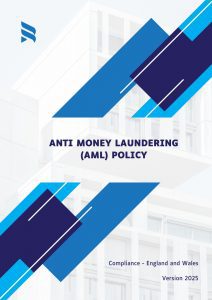Renting a property in the United Kingdom requires more than just a handshake. Navigating the legal intricacies is crucial for landlords and tenants alike. In this extensive blog post, we will delve into the intricacies of tenancy agreement clauses to ensure compliance with UK laws. If you’re ready to get started, don’t forget to explore our detailed Tenancy Agreement Template.
- Setting the Stage: Clear Identification of Parties:
Begin your tenancy agreement by providing a detailed introduction to the main characters – the landlord and the tenant. Include full names and contact information to establish transparency and foster effective communication.
- Painting a Picture: Property Description and Condition:
The devil is in the details, and this holds true for property agreements. Include the property address, specify areas designated for tenant use, and create a comprehensive inventory list. This not only sets expectations but also minimizes disputes over damages in the future.
- Time Matters: Defining Terms of the Tenancy:
Clearly outline the type of tenancy, whether fixed-term or periodic. For fixed-term agreements, include start and end dates, and for periodic arrangements, elucidate the notice period required. This ensures a smooth and predictable tenancy.
- Financial Foundations: Rent and Payment Terms:
Lay out the financial expectations clearly. Specify the rent amount, payment frequency, and the preferred method of payment. In addition, address the possibility of rent increases, ensuring alignment with fair rent practices and UK regulations.
- Safeguarding Deposits: Deposit Protection Clause:
UK law mandates the protection of a tenant’s deposit in a government-approved scheme. Provide a comprehensive clause detailing how the deposit will be handled, reasons for deductions, and the procedure for dispute resolution. Transparency here is key to a harmonious landlord-tenant relationship.
- Structuring Responsibility: Repairs and Maintenance Clause:
Clearly define the responsibilities of both parties regarding property maintenance and repairs. Align these with the statutory obligations outlined in the UK’s Landlord and Tenant Act to create a fair and legally compliant agreement.
- Respecting Privacy: Access and Inspections Clause:
UK law requires landlords to give reasonable notice before entering a property. Incorporate a clause specifying the notice period and the circumstances under which access may be required, respecting the tenant’s right to privacy.
- Tenant Duties: Obligations and Responsibilities:
Lay out the tenant’s responsibilities explicitly – from maintaining the property to promptly reporting repairs. Include any specific rules set by the landlord to ensure a clear understanding of the tenant’s obligations under UK law.
- Saying Goodbye: Termination of the Tenancy Clause:
Clearly outline the conditions under which either party can terminate the tenancy. Include notice periods and any specific circumstances that may lead to early termination, providing a roadmap for a smooth exit if needed.
- Upholding Legal Standards: Compliance with UK Laws:
Throughout the agreement, emphasize the importance of compliance with UK laws. This encompasses anti-discrimination laws, health and safety regulations, and other relevant statutes. Staying on the right side of the law is not just good practice; it’s a legal necessity.
Crafting a foolproof tenancy agreement is a fundamental step toward a successful and legally compliant landlord-tenant relationship. By incorporating these detailed clauses, both landlords and tenants can navigate the complexities of the rental process with confidence. If you’re ready to put pen to paper (or fingers to keyboard), explore our comprehensive Tenancy Agreement Template to ensure your agreement covers all bases.
Happy renting!





